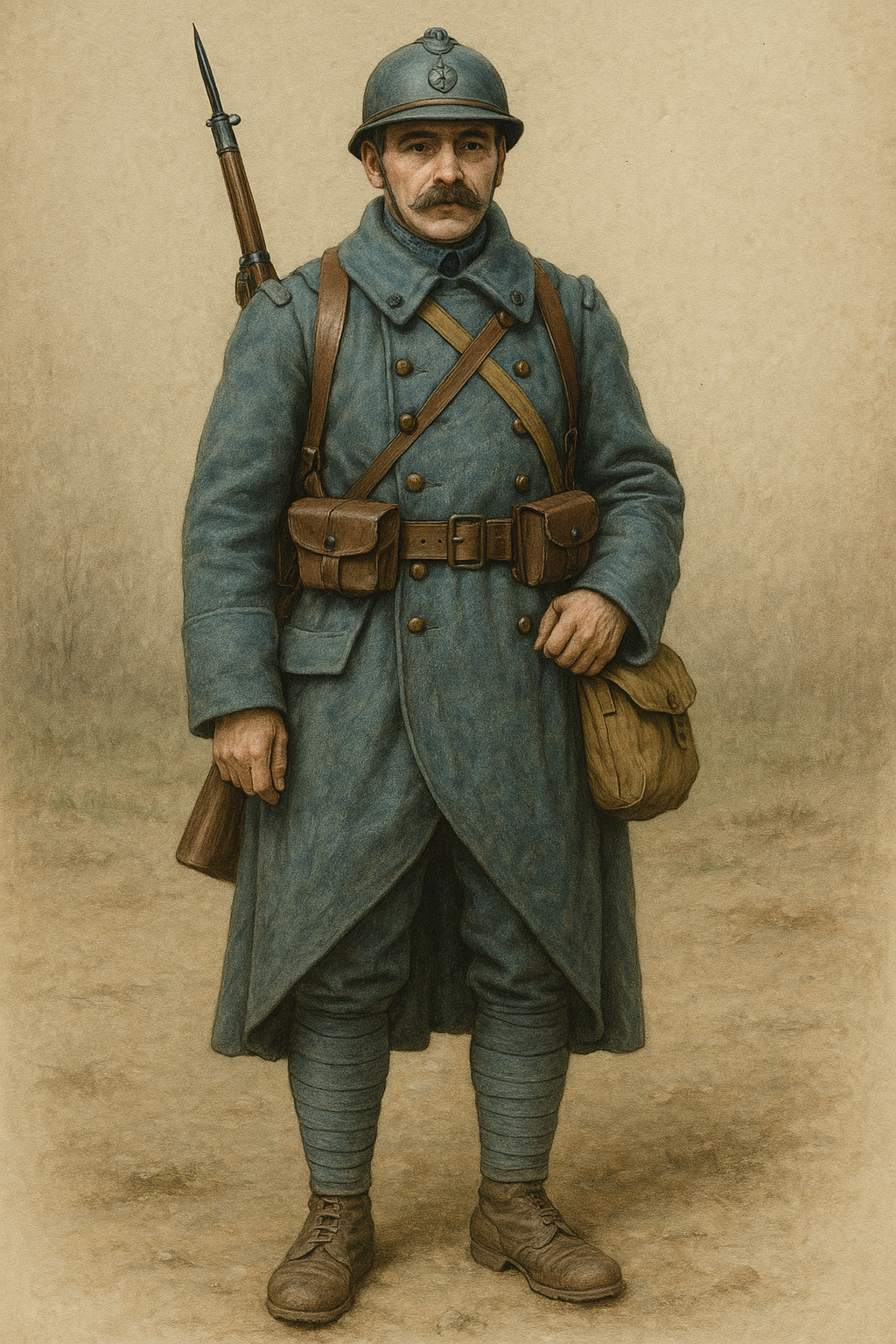
The Evolution of the French Army Uniform in WW1: From 1914 to the Iconic French Greatcoat
Published on Jul 21, 2025
The Evolution of the WW1 French Army Uniform: From Tradition to Trench Warfare
When World War I broke out in 1914, the French Army marched into battle wearing uniforms that echoed 19th-century military pride and tradition. Bright colors, elegant tailoring, and striking silhouettes were meant to inspire patriotism and intimidate the enemy. But as the brutal realities of modern warfare emerged, these traditional designs quickly gave way to more practical and camouflaged attire.
In this article, we’ll explore the fascinating transformation of the WW1 French Army uniform, focusing on iconic pieces like the French 1914 uniform and the essential French greatcoat WW1. Whether you're a historical reenactor, a military history buff, or a collector of authentic military garments, understanding these uniforms adds depth to the appreciation of France’s wartime heritage.
1. The French 1914 Uniform: Tradition Meets the Battlefield
At the start of WW1, French soldiers—referred to as Poilus—wore the iconic French 1914 uniform, a reflection of the army’s traditional aesthetics. This uniform consisted of:
- Bright red trousers (pantalon rouge)
- Dark blue wool tunics with a standing collar
- Képi cap, typically red with blue details
- Leather boots and belts
- Heavy wool greatcoat for colder months
These uniforms were rooted in the Napoleonic era, meant to signal French military pride. However, they stood out starkly against the drab, earth-toned uniforms of the German and British armies—making French soldiers dangerously visible targets.
2. From Blue and Red to Horizon Blue: Functional Redesigns
The disastrous early months of the war led to a reevaluation of uniform design. The French Ministry of War quickly realized that flashy colors had no place in trench warfare. Enter the horizon blue uniform.
Key Features of the Horizon Blue Uniform:
- A bluish-grey color that blended into the smoky, muddy trenches
- Simplified tunic design, often single-breasted with fewer decorative elements
- Puttees or gaiters wrapped around the lower legs
- A more subdued képi or steel Adrian helmet, introduced in 1915 for head protection
This practical version of the WW1 French Army uniform became the standard for the remainder of the war.
3. The French Greatcoat WW1: Utility in Harsh Conditions
Perhaps the most iconic and essential element of the French WW1 uniform was the greatcoat (capote in French). Issued to soldiers for warmth and protection, this heavy wool garment was a constant companion through the long winters in the trenches.
Key Features of the WW1 French Greatcoat:
- Constructed from thick wool, typically dyed in horizon blue or grey
- Double-breasted with large buttons
- Turn-down collar to block wind
- Rear vent for easier movement
- Long length—usually calf-length—for full-body protection
The French greatcoat WW1 wasn’t just a coat; it served as a blanket, ground mat, and rain shield, often worn day and night. For reenactors and collectors, an authentic reproduction of this item is a must-have.
4. Equipment and Accessories: Completing the Look
Alongside their uniforms, WW1 French soldiers carried a standard issue of equipment:
- Lebel rifles or Berthier carbines
- Canvas backpacks and mess kits
- Leather or canvas ammunition pouches
- Adrian helmet (introduced in 1915 as a response to head injuries)
As the war progressed, soldiers began modifying their gear for practicality, adding trench clubs, knives, and personal items for comfort.
5. Symbolism and Morale in Uniform Design
Despite the shift toward practicality, uniform elements were still used to instill a sense of identity and pride. Rank insignia and regimental badges were worn with respect. The képi, although less common in battle after the introduction of the helmet, remained a symbol of the French soldier's heritage.
Even the horizon blue color had emotional value. It was chosen not just for camouflage but also because it reminded many of the sky and hope—something soldiers clung to amidst the horrors of war.
6. French WW1 Uniforms in Historical Reenactments and Collecting
Today, the WW1 French Army uniform is a favorite among historical reenactors and collectors due to its distinctive style and historical importance. Whether you're looking to portray a 1914 infantryman or a 1917 trench veteran, there are key details to get right:
- Authentic materials: Wool, leather, and brass
- Accurate color tones: Bright for early war, horizon blue for mid-to-late war
- Historical accuracy: Buttons, stitching, and unit markings matter
At Paddelaters.com, you can find high-quality reproductions of the French greatcoat WW1, trousers, tunics, and more. These are meticulously crafted to meet both display and reenactment standards.
7. Why the WW1 French Army Uniform Still Matters Today
More than a century later, the WW1 French Army uniform continues to inspire. It's a tangible reminder of the sacrifices made and the evolution of modern warfare. For historians, collectors, and students of military design, it offers insight into how necessity drives innovation—even in clothing.
From the vivid French 1914 uniform to the practical French greatcoat WW1, each piece tells a story of adaptation, survival, and national pride.
Final Thoughts
The transformation of the WW1 French Army uniform marks one of the most significant shifts in military fashion history. What began as a symbol of tradition and national identity had to quickly evolve into gear suited for trench warfare and survival. Yet even in practicality, the French soldier’s uniform retained its spirit.
If you're interested in exploring authentic reproductions of these iconic uniforms, visit Paddelaters.com to browse a curated selection of WW1 French military clothing and accessories.
